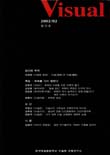학술논문
발상의 전환 : 神人同形에서 神人異形으로
이용수 108
- 영문명
- The Meaning and Symbolism of Eleven-headed Guan-yin Images in the T’ang Dynasty
- 발행기관
- 한국예술종합학교 미술원 조형연구소
- 저자명
- 강희정(Kang, Heejung)
- 간행물 정보
- 『Visual』창간호, 112~134쪽, 전체 23쪽
- 주제분류
- 예술체육 > 예술일반
- 파일형태
- 발행일자
- 2002.02.28
무료
구매일시로부터 72시간 이내에 다운로드 가능합니다.
이 학술논문 정보는 (주)교보문고와 각 발행기관 사이에 저작물 이용 계약이 체결된 것으로, 교보문고를 통해 제공되고 있습니다.

국문 초록
영문 초록
The Guan-yin with eleven heads was derived from esoteric buddhist sutras which had been translated into Chinese during the Sui and the T’ang dynasties. Since Chinese people began to make the buddhist sculptures for the first time, they maintained to represent the images to be anthropomorphic. It was one of radical alterations that they created Eleven-headed Guan-yin images with multi-arms. They allowed non-human characters to Guan-yin images quite different from anthropomorphic icons traditionally approved. It seems that the people in the T’ang dynasty hoped for bodhisattvas to answer their various secular prayers. One can surmise, therefore, the more their wishes were various and earthly, the more images were made in the form of something inhuman with multi-heads and multi-arms.
Even the concept and the ritual of an Eleven-headed Guan-yin had been introduced in esoteric buddhist sutras, the creators had not followed their manuals. In the comparison of those manuals with images of Eleven-headed Guan-yin, they should create the images in their own minds. It can be concluded that Eleven-headed Guan-yin images were expressed their approval for non-human manifestation in order to prove the greatness of ‘the God of Mercy’.
목차
1.
2.
3.
4.
5.
6.
Abstract
키워드
해당간행물 수록 논문
참고문헌
교보eBook 첫 방문을 환영 합니다!

신규가입 혜택 지급이 완료 되었습니다.
바로 사용 가능한 교보e캐시 1,000원 (유효기간 7일)
지금 바로 교보eBook의 다양한 콘텐츠를 이용해 보세요!





